
Features
Business
Trends
Growing in the Green: Are your combinations profitable?
February 12, 2013 By Melhem Sawaya
Profitable greenhouse operations know the cost of every product they produce, that is, if they sell it at a profitable margin.
Profitable greenhouse operations know the cost of every product they produce, that is, if they sell it at a profitable margin. The costing process should be divided into four main costs: direct, indirect, shipping and shrinkage.
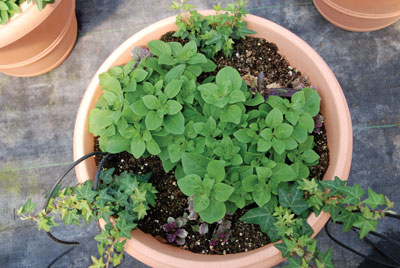 |
|
| Planting dead plants … and one petunia too many. PHOTOS COURTESY MELHEM SAWAYA Advertisement
|
DIRECT COSTS
■ These costs must include the following inputs.
Pot or container should include all parts of the container, including the hanger and saucer.
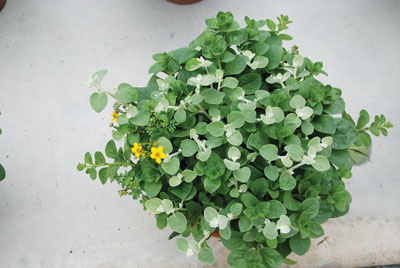 |
|
| Planting vigorous licorice plants in the middle is much better than on the side. | |
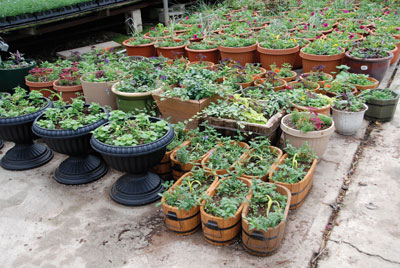 |
|
| Differentiate your combos with different containers. | |
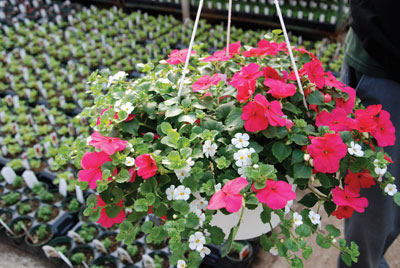 |
|
| Mixing seed and vegetative varieties |
|
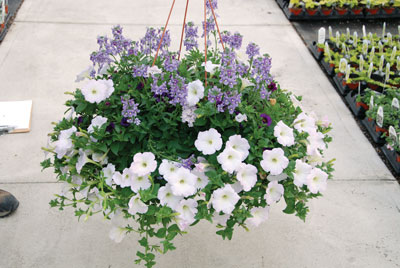 |
|
| Simple, long-lasting, and fragrant! |
Growing media used per pot. If you are mixing your own media, it is a must to calculate the cost per cubic foot or cubic metre, and know how many containers a cubic foot or cubic metre fills. Many growers make the mistake of guessing on this calculation, because they figure it is a small cost per container; however, it can be a substantial expense when multiplied by the total number of containers grown.
It is very important, when calculating the cost per unit, to calculate to four digits after the decimal. For example, if your cost for 8” pots is $100/60 pots, the cost per pot to be included should be $1.667.
Plant material. Whether it is a liner, a plug or a 4” pot, plant material costs should be calculated separately as an individual crop. This input cost can be used when the material is used in other products, such as combination planters.
Product enhancement. This could be supporting rings, stakes, care tags, UPC labels or clips. And don’t forget the Grown In Canada sticker.
Growing area should be calculated in square-feet/weeks.
This is the space, in square feet, that each container is occupying over so many weeks. This could be spread over three stages before they are totalled – pot to pot for so many weeks, then half spacing for so many weeks, and then final spacing for so many weeks.
Crop maintenance. Fertilizer usage can be calculated in different ways. If it is a mono crop, then it is easy to take the total cost of the fertilizer used and divide by the number of containers. If fertilizer is wasted on the ground, it is still a cost! If you have a variety of crops, take the total cost and then factor the different fertilizing frequencies before you divide by the total number of pots for every crop.
The cost of water usage needs to be included even if it is minimal.
Pest control is becoming a bigger cost factor and ranges from one per cent to 10 per cent of total costs. This includes insecticides, fungicides and biocontrols.
Labour costs include wages for watering, spraying, crop monitoring, pinching, spacing and every other step required to keep the crop in top form. Calculate each step in seconds, and do not round to minutes; being as precise as you can makes a big difference when you multiply the total transactions!
INDIRECT COSTS
■ These costs exist regardless of crop size or whether a crop is grown at all. Prime examples include mortgage payments and the owner’s salary.
There are a variety of indirect cost calculations.
Bank charges include the mortgage, operating loan, principle and interest.
Management fees are the wages for the owner, accountant, consultant, sales staff, all wages that are not directly related to production, and, of course, the various government fees.
SHIPPING COSTS
■ Shipping costs used to be three to five per cent of total expenses 20 years ago, but they’re now somewhere between 15 to 25 per cent due to (i) fuel costs that have doubled over the past 20 years; (ii) higher labour costs; (iii) frequency of delivery (smaller orders and more often deliveries); (iv) vehicle insurance, whether you own the truck or lease it; and (v) depreciation.
SHRINKAGE COSTS
■ These costs should be factored into every crop costing exercise for two main reasons – to have the right amount you promised your customer, and to project your actual cost.
The shrinkage cost could be due to inferior product quality, crop failure, delayed sales and/or lack of sales.
Shrinkage can also be due to plants delivered but not paid for due to “pay by scan,” customer complaints (which could be excuses because sales are slow), and bad accounts.
With Excel spreadsheets, adjustments can be done fast and easy. You can also make accurate decisions based on facts and scenarios on paper before they are put into action. I will have an example later.
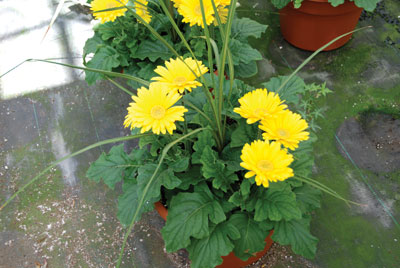 |
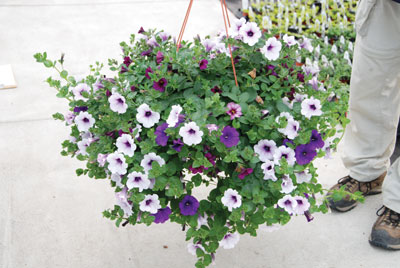 |
| We’re not taking care of consumers when we sell planters that last just a little longer than cut flowers. |
Compatible varieties that look good at sales time and perform well up until frost. |
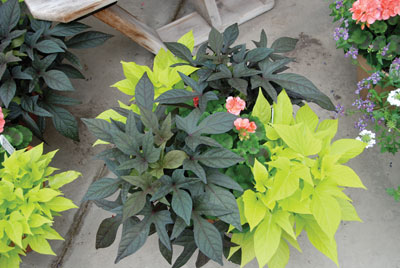 |
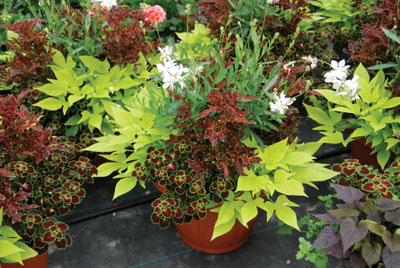 |
| What a waste of the two geraniums.
|
Something quite elegant and distinctive.
|
GUIDELINES FOR PROFITABLE PROGRAMS
■ Here is a checklist for profitable mixed containers, in addition to our earlier suggestions.
- Plant live, pest-free plants.
- As obvious as it sounds, we sometimes plant inferior products and try to make something out of them. Most of the time we can . . . but at what cost? It would be much better to solve the problem at the start before incurring the many extra costs and treatments required to make the plants marketable.
- Using the minimum number of liners per container that will achieve a good product at the shippable date.
This will result in a more cost-effective plant. It will also mean a better quality combination for the consumer because the fewer the number of plants in a combination, the better the water-holding capacity of the media.
As well, fewer growth regulators will be used and that means lower costs and better quality.
- Compatible varieties are very important, not just for ease of production, but for simple economics.
An especially vigorous plant can take over the whole combination. On the other hand, a very compact variety will probably disappear totally, so varieties like this should not be mixed with vigorous ones.
- Fertilizer is as important as any of the factors that we have to consider.
It’s important to fertilize continuously, but do not overwater. Check EC and pH regularly. Use high calcium and potassium ECs to control height. This will make water less available to the plants.
Use different fertilizers to adjust minor soil pH – use 18-9-18 to lower it, 14-0-14 to raise it, and 17-5-17 for neutral pH. Immaterial of which fertilizer you are using, if the EC is too high the pH will be low – balance and moderation is the key!
- Start warm and finish cool.
All plants should have a good root system before they are cooled; at the same time it is just as important to cool the crops at the end of the growing cycle, especially cold crops.
- Maximum light.
This is a must to grow strong plants that will be acclimatized for outdoor production. We cannot grow plants under three-deep rows of hanging baskets and expect the plants to perform well when they get out doors in full sun.
- Number of cultivars.
In general, use three per mixed combination – more is not better and it is more difficult to find cultivars that look good and grow well together.
- Seed varieties.
These are just as good as vegetative varieties and sometimes they are better. And why not combine seed and vegetative varieties?
- Use the best cultivars.
Whether vegetative or seed, they will be the cheapest to grow over the entire crop cycle.
- Treat vigorous varieties with growth regulators before planting.
This is the most economical timing, and the best for consumers because it will give a larger window between the treatment and selling dates.
- Expensive containers.
These should be used for upscale plantings to justify the cost of the container when the product is not meant to be transplanted. Many presentable containers that function quite well are priced reasonably.
- Space your planting dates.
You do not sell all your containers in one week, so why plant all of them the same week?
- Sell fresh plantings.
Fresh plantings require less maintenance and shorter growing time, and that means better profit margins.
Fresh plantings also have better shelf life at retail and with ultimate consumers. The reason? The container media is not root-bound, so the planting media will hold more water. As well, younger plants adjust to different climates more successfully than root-bound containers.
- Combo sizes.
A 10” basket isn’t your best choice – it is too small for successful combinations and the shelf life is too short. The smallest container size should be 12”.
How many cuttings per pot? For 12” and 14”, go with four to five, and for 16” and 20”, I’d suggest five to seven. Using more than that negatively affects quality, shelf life and profits.
- Grow only what is ordered.
Remember also that the selling price should provide a minimum profit margin of 20 per cent. That is why it is much more important to calculate profit margins and not dollar sales.
Our success is directly connected to that of the store, garden centre and, most importantly, the ultimate consumer.
Melhem Sawaya of Focus Greenhouse Management is a consultant and research coordinator to the horticultural industry. Comments on this or any other article are always welcome; please e-mail mel@focusgreenhousemanagement.com, or visit www.focusgreenhousemanagement.com.
Print this page